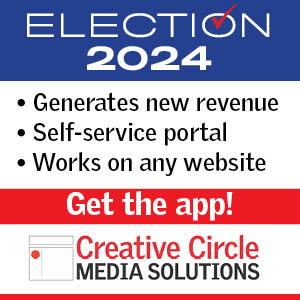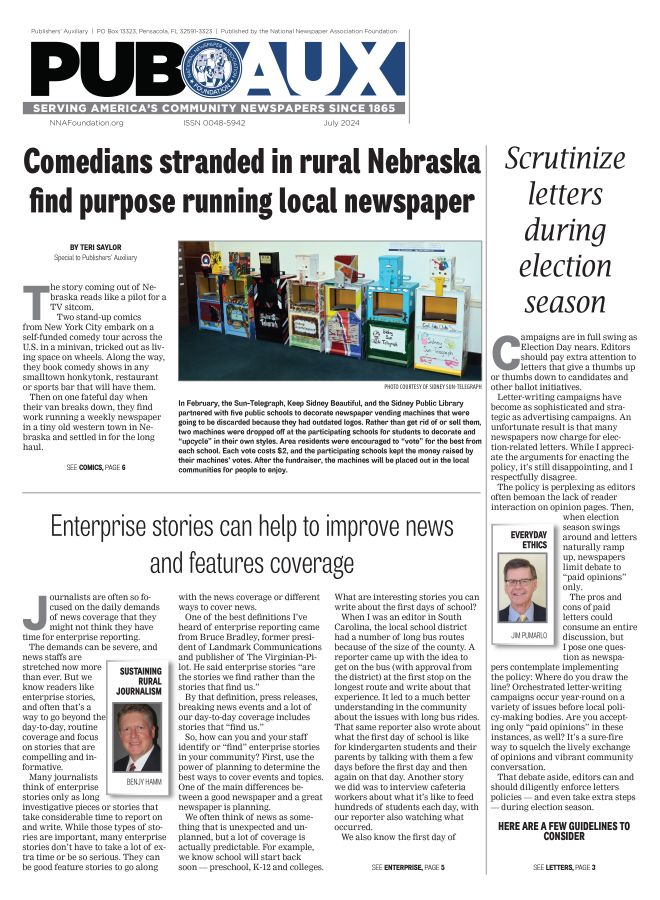When it comes to digital, less is not more
Apr 3, 2012
On March 9 the owner of Village NetMedia announced that he was closing all four of his community newspapers in Maine, citing changes in the newspaper publishing industry and a weak economy as reasons for the closure.
Falling prey to the closure were the weeklies the Village Soup Gazette in Rockland, the Village Soup Journal in Belfast, the Bar Harbor Times in Bar Harbor and the Capital Weekly in Augusta.
Transitioning from a digital to print business model has been a growing trend in the newspaper industry in recent years. The closure of Village NetMedia’s publications raises questions about which model is most likely to succeed in regard to generating revenue and capturing the attention of increasingly distracted audiences.
The Veteran
Despite recent strides made by online publications, print remains crucial to the success of the modern newspaper, points out Alan Baker, publisher of The Ellsworth American and Mount Desert Islander in Ellsworth, ME.
“A print model generates substantially more revenue than a digital model. Most local advertisers still have more confidence in their print advertising than they do in online advertising,” he said.
According to Colin O’Donnell, senior vice president/director of content and strategic planning for the Daily Herald in the Chicagoland suburbs, this sense of confidence stems from the impact of print advertising.
“Print still generates the lion’s share of revenue. Print advertising drives customers to advertisers’ businesses. Advertisers are aware of this,” he said.
Though it has been affected to some degree by shifts in the industry, overall the Daily Herald’s print version has maintained its strength in recent years. The family of community newspapers in the Chicago suburbs reaches 100,000 readers total as well as a more targeted audience in each of the regions. O’Donnell credits this success partly to strong, strategic marketing including a partnership with Channel 7, a leading news station in the area.
Certain aspects of print have a strong pull for readers as well, adds David Zeeck, publisher of The News Tribune in Tacoma, WA.
“What I like about print is its breadth of coverage. The audience for print is still larger than digital. Also, as a direct response vehicle, nothing can beat print. For example, if you publish an offer in print, people will respond to it. That is the impact of print. Digital doesn’t have nearly the call to action that print does, because most people skim online content,” he said.
Readers also appreciate the convenience that the format of a print model offers them, according to Neil Holdway, News Editor at the Daily Herald.
“Many of our readers tell us they like the fact that the news is organized for them in print. They do not need to click around to find the type of articles they want to read, because the content is neatly divided into sections,” he noted.
There are drawbacks to print as well.
“(P)rint news can be old news if it is not handled well,” O’Donnell explained.
“Print has a limited amount of space for news. You can post content on a website—not only copy but also multi-media features like videos, PDF reports and animation,” Holdway said.
Zeeck also asserts that although print advertising still commands the largest percentage of revenue, digital advertising is coming into its own.
“Digital is an increasingly powerful component of the revenue stream, so it is becoming more important,” he said.
The Rookie
O’Donnell points out that the innovation factor of the digital newspaper business model should not be underestimated.
“A digital platform is inevitably going to offer a level of success because technologically there are so many ways of reaching an online audience. So, even though online advertising does not currently bring in as much revenue as print, it is still a valuable piece of the advertising whole,” he said.
The digital model offers a variety of channels that audiences can use to share articles—expanding a publication’s reach.
“Accessibility is an advantage; all people need to access your publication’s content is your Web address. Upon reading your content, your audience can then do some of the work for you by sharing it via social media channels. In addition, search engines can further promote your content via the tagging system,” Holdway said.
Conversely, one of the benefits of online content, immediacy, also comes with challenges.
“Immediacy can pose a problem. You have to post news fast in a competitive market, and there are both advantages and drawbacks to that—for example, if a newsroom is rushing to post a report but the full story isn’t there yet and/or errors are made,” Holdway said.
Zeeck said he sees the digital model as being limited in comparison to the full scope of news offered by its print companion.
“A good newspaper is also kind of a community building institution; you help build a common news/information piece for a community. Although digital allows you to expand behind local news universe, it also allows you to carve it into little pieces, which takes away from the community aspect,” he said, adding, “It becomes a narrow stream of news. I do not think that is constructive to community or to civil society in general in terms of being truly informed.”
The Renaissance Man
The general consensus seems to be that ultimately, a combination print-digital model—a format most publications have adopted in recent years—is the most savvy business choice. More options equal more appeal for a broad audience of consumers.
Baker cites the success of the system his publications use as an example of the smart way to utilize both mediums, and better yet, get paid for it.
“We sell online subscriptions to our paper just as we sell print subscriptions. When you pay for a digital subscription you get the entire publication online including advertising, so you have serendipity across both mediums. I believe strongly in this system for smaller community newspapers,” he said.
The Daily Herald adopted a hybrid pay system—with some content regulated via a metered system—in September, and it was the first publication of its type in the Chicagoland area to do so.
“We believe that our content has value, and that it maintains its value regardless of the platform used to access it,” O’Donnell said.
When it comes to optimizing the combination print/digital model, O’Donnell advises industry peers to follow three courses of action.
“First, it is crucial to publish unique content on both platforms. Second, you need to have a staff that understands what the benefits of this model are to the readers and the advertisers. Finally, it is important to train your sales staff on digital advertising sales strategy. Many salespeople understand how to sell print, but do not understand how to make an effective sales pitch for online advertising. Training is key,” he said. © Megan Oster 2011
Megan Oster is a Chicago-based writer with more than a decade of experience writing a variety of material ranging from newspaper and trade magazine articles to public relations and marketing pieces. She can be reached at meganoster77@gmail.com.







